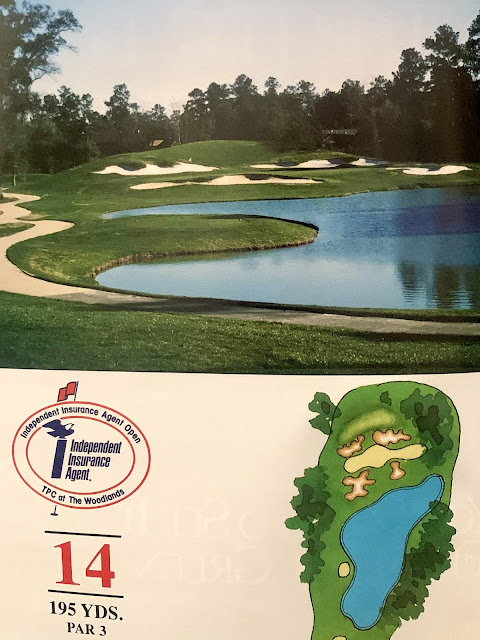Whatever swing thought he used this week worked well! It seems professionals don’t really give away their trade secrets very often. They like to keep their edge private and their coaches and caddies are the only ones privy to that secret. There was a book published in 1993 titled “Swing Thoughts” which revealed some swing thoughts from various players from the 1980’s and early 1990’s. These swing thoughts were used to win various tournaments from both the PGA and LPGA tours. There are as many swing thoughts as there are players.





Above are some samples of these swing thoughts. In my opinion, swing thoughts fall into two categories of either mental (creating a picture, feel or routine) or physical (direct order to a body part). For the mental swing thought the sample from David Graham indicating he focused on his his pre shot routine to win the 1981 U.S. Open helped him stay calm. For Cindy Figg-Currier it was the image from Harvey Penick swinging a bucket of water helping with the timing of her swing. This thought led her to victory in the 1991 JAL Big Apple Classic. The physical swing thought can be a pre swing or in swing thought. Pre swing would include grip or set up which Missie Berteotti used to win the 1992 Women’s Kemper Open. In swing thoughts are direct orders to a body part to perform in a certain manner. This could be backswing, downswing or finish. The example from Jerry McGee in which he says “drive your right knee toward the target” is a thought he used to win the 1979 Greater Hartford Open. The bottom line is swing thoughts are personal and every player has a swing thought based on what they are working on in their swing.
Swing thoughts can be fleeting however. Jack Nicklaus once told one of my mentors, Terry Dill, that his swing thoughts lasted an average of six weeks. This means during a year of playing the TOUR he might have 3-4 different swing thoughts. I feel most professionals have a “library” of thoughts to draw from. Some days your “A” swing thought just doesn’t work so you have to go to “B” or “C”. I think the stress of a certain event can influence whether your swing thought is going to work.
As a PGA golf professional I played in hundreds of PGA Section tournaments. I also qualified to play in three PGA TOUR events including the 1990 Texas Open and the 1995 and 1999 Houston Open. Competing in the Section events I would say nerves aren’t too much of an issue as I am in my comfort zone at this level of competition. My swing thoughts usually were clear and led me to some success as I won the 2005 STPGA Section Senior Championship with scores of 71-67. I think most PGA and LPGA competitors feel the same on their respective tour. But, competing in a major such as a U.S. Open, Ryder Cup or Solheim Cup, the nerves begin to play a roll in how effective the swing thought will be. When I played in my first Houston Open I was also the head professional at the host course. To me, this was my major event. I will admit I was nervous and anxious to play. As I was warming up my heart rate was definitely up but I was in control. On the putting green I was in control. When it was time to go to the first tee I was walking between the ropes and my heart rate was off the charts. When the starter announced my name the crowd applauded and I had an out of body moment. I couldn’t feel my feet and the brain was racing. I couldn’t even think of a swing thought and before I knew it my ball was down the fairway about 260 yards! Once I got to the second hole I calmed down and my swing thought worked beautifully. What I learned from that experience is your swing thought (and not thoughts) has to be simple. It has to hold up to the tension of competing at the highest level.
I really admire these young players coming out and how they perform. But, as we’ve witnessed even top players have lapses coming down the home stretch leading a tournament. When the mind starts thinking to far in advance, you skip the shot at hand and the swing thought goes away.
After a lesson I always try to summarize the thoughts of the hour into one basic swing thought to take to the course. Then, as we progress through the instruction process I ask them how their last round of golf fared? What was good, what didn’t work so well, then we keep refining. I recommend you write down your thoughts when things are going well. Over time you will have your library of thoughts you can draw from.




















